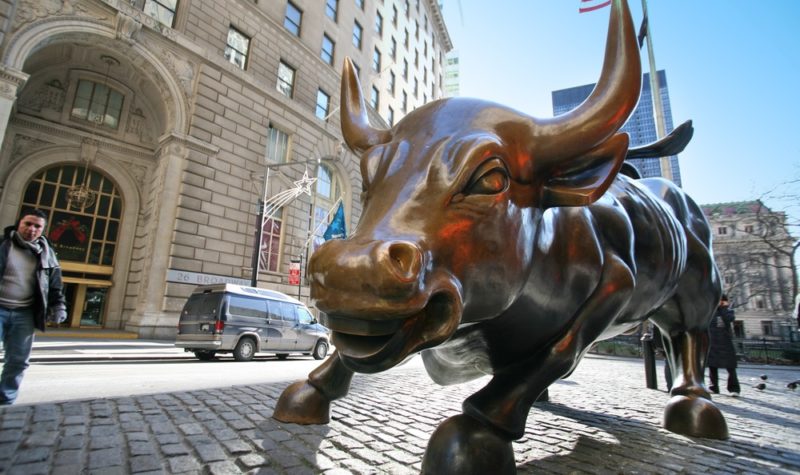U and I Group – unlocking potential to realise positive change

This brownfield property developer is cheap and looks to be going places, writes Mark Watson-Mitchell.
Did you know that there are over 6,700 acres of unused ‘brownfield’ land in London alone?
Did you know that there are some 24,000 commercial buildings in London that have been sitting empty for long periods of time?
What exactly is ‘brownfield’
By the way, if you did not know it, ‘brownfield’ land is any previously developed land that is not currently in use but may be potentially contaminated.
It also describes land that has previously been used for industrial or commercial purposes with known or suspected pollution including soil contamination due to hazardous waste.
Such examples are abandoned petrol stations, dry cleaners, industrial properties, scrap yards, and commercial properties where chemicals have been used, transported or stored.
Enough for 1m new homes
It may well surprise you to learn that in England there are nearly 20,000 brownfield sites across the country, enough to be redeveloped into around 1m new homes.
There continues to be an urgent need to sustainably reinvent our towns and cities to become thoughtful, efficient, enjoyable places, that allow everyone in society to prosper.
Regeneration experts
The structural need for regeneration is more important than ever and that is just what U and I Group (LON:UAI) considers to be its main focus. Its strategic purpose is ‘to create value for all through regeneration, driven by values of imagination, intelligence and audacity.’
Formerly called Development Securities, the company is a property developer and investor targeted upon regenerating overlooked and underappreciated urban places in the London City Region, Manchester and Dublin.
It really is an expert at regeneration.
How does it do it
Boldly it takes on overlooked and underappreciated sites, often too complex for others to consider.
Then using both its creative and entrepreneurial experience, it aims to unlock their potential. In the process it helps to revive communities, create jobs, boost local economies, as well as making profits for the group’s shareholders.
Not only does it have its own £130.6m investment portfolio, but it has a near £11bn portfolio of complex, mixed-use, community-focused regeneration projects. Those projects could take it into 2034.
It is involved in several development and trading schemes, funded through and with local authorities and public bodies.
Interims next week
Next Tuesday should see the company announce its interim results to the end of last September.
The accompanying statement could be very interesting and hopefully enough to get investors aware of the group’s potential.
Could next week’s results also bring about a reissue of revenue and profits guidance by the company, suspended earlier last year?
Covid-19 measures
The pandemic brought about swift action by the group, reviewing its operations from top to bottom, creating £4m a year in cost-savings, bringing about an acceleration of efficiencies and suspending certain capex and discretionary costs.
Also, it sold off a number of smaller projects and boosted its cash balance in the process.
Brokers going for growth
Analyst Tom Musson at Liberum Capital considers that the group’s shares are a ‘buy’.
He forecasts that for the current year to end-March the company could well see sales jump from £70m to £111.2m, with pre-tax profits of £5.6m compared to last year’s £45.8m loss, generating about 3.7p per share in earnings.
However, his optimism is underlined by prospects of £212m of sales revenue for the coming year, giving a pre-tax profit of £30.4m, worth 19.8p per share in earnings.
Good balance sheet
The net debt last year was £130m, this year could end at £121m and then down to £99m in the coming year.
Musson estimates that in that period the % loan to value ratio will reduce from 40% to 36% – which indicates a good liquidity and strength in its balance sheet.
Good institutional backing
There are 126.2m shares in issue, which values the group at just £79.5m.
The leading holders include Aberforth Partners (18.8%), FIL Investment Advisors (10.9%), JO Hambro Capital Management (10.2%), Ennismore Fund Management (6.0%), Jupiter Asset Management (4.78%), BMO Asset Managers (4.68%), Threadneedle Asset Management (4.56%), M&G Investment Management (4.29%), Aberdeen Asset Managers (4.16%), and Wellcome Trust Investment Management (4.07%).
My rating on its shares
With its shares standing currently at around 63p, on the face of it they may well look expensive on current year earnings. But going into prospective earnings they go out on just a 3.2 times ratio.
Considering that Liberum reckons that the group will pay a 3.5p per share dividend this year and then 10p next year – to my mind that makes the shares an absolutely stonking investment.
Let us see just how much detail comes out with next week’s interim statement.
I now put a target price of 80p on the shares, which seems to me a very easy and rewarding objective.
Comments (0)